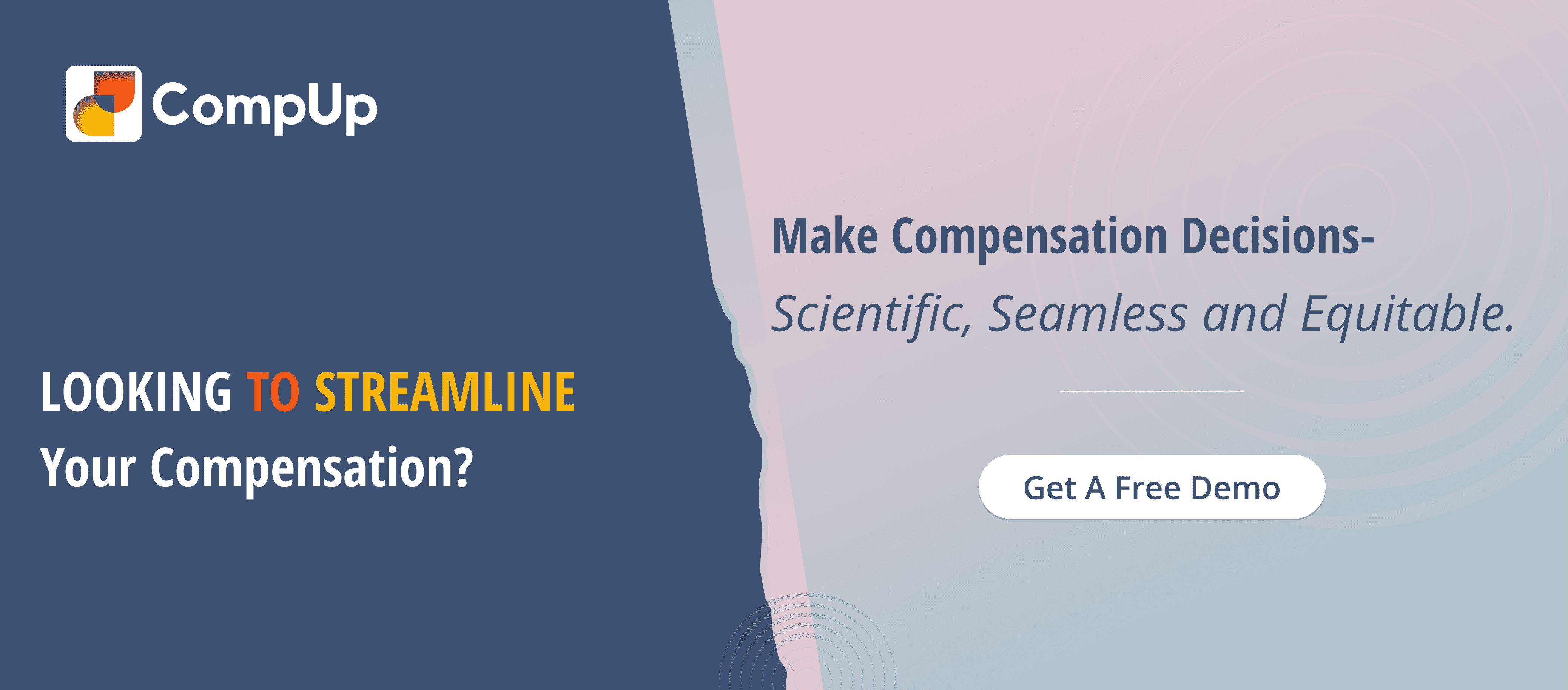The current employees appreciate acknowledgment of their contributions and expect to be rewarded beyond their base salary. Keeping this in mind, approximately 90% of companies have now introduced a rewards strategy in their workplace according to a study.
However, there are only 23% of employees truly feel recognized or rewarded by their employers as per research conducted by Gallup.
This means having a total rewards program is not enough for retaining employees and attracting new ones unless your rewards policies are crafted taking into consideration the current needs of your workforce.
Let’s have a look into how you can create a total rewards strategy for your business with the latest trends in the compensation and benefits industry.
What Is a Total Rewards Strategy?
A total rewards strategy is a holistic plan made to have the essential rewards and recognition components integrated into your basic employee compensation plan. This includes both monetary (wages, annual bonuses, incentives, variable pay, and more) and non-monetary aspects (paid time off, flexible working hours, vacation days, and more) of compensation planning.
The best example of understanding employee total rewards comes from studying Maslow’s hierarchy of needs. It enlists all the categories of needs that can be considered when creating a total rewards plan.
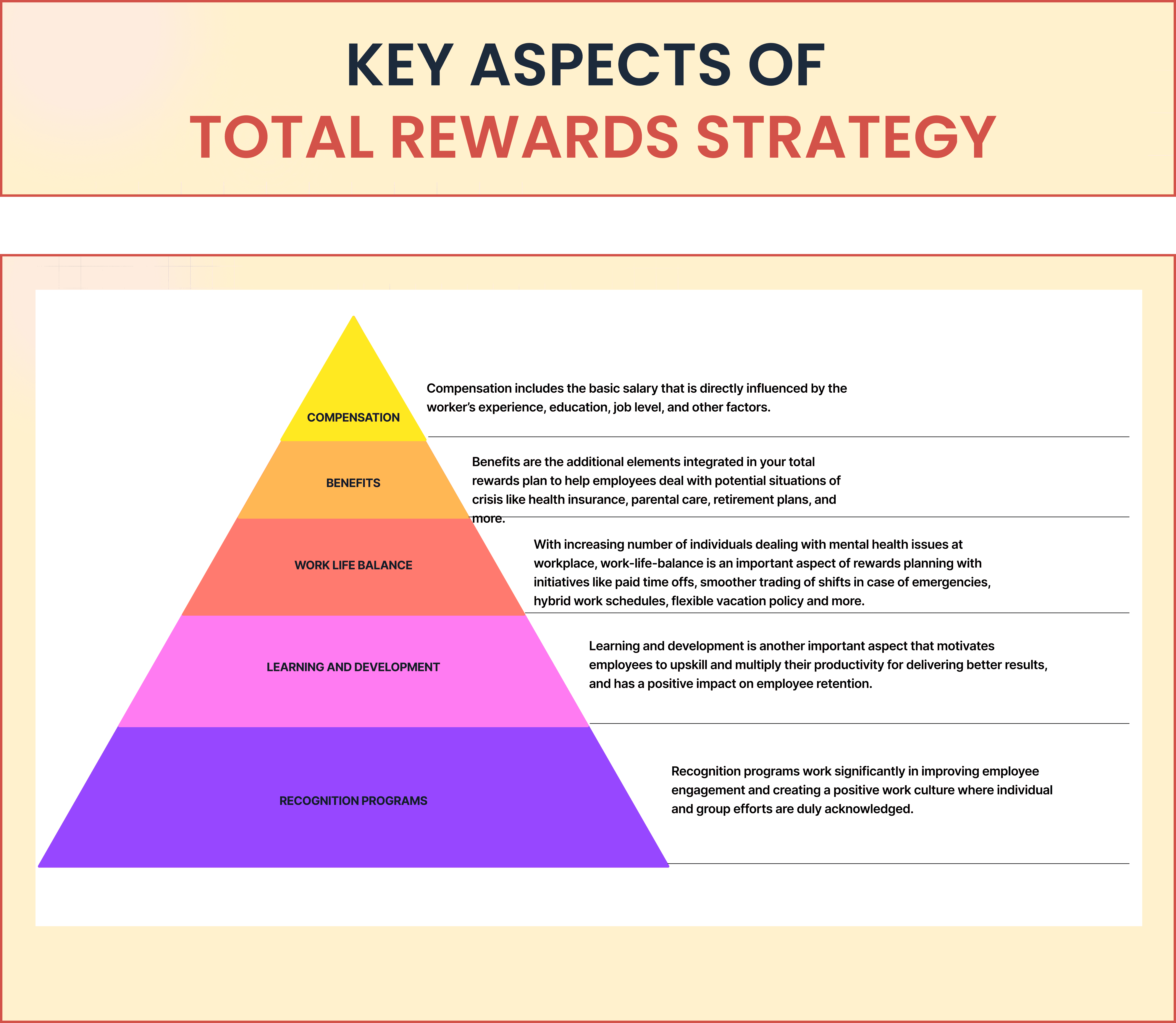
There are certain key aspects of the total rewards strategy:
- Compensation includes the basic salary that is directly influenced by the worker’s experience, education, job level, and other factors.
- Benefits are the additional elements integrated into your total rewards plan to help employees deal with potential situations of crisis like health insurance, parental care, retirement plans, and more.
- With an increasing number of individuals dealing with mental health issues at the workplace, work-life balance is an important aspect of rewards planning with initiatives like paid time offs, smoother trading of shifts in case of emergencies, hybrid work schedules, flexible vacation policy, and more.
- Learning and development is another important aspect that motivates employees to upskill and multiply their productivity to deliver better results and has a positive impact on employee retention.
- Recognition programs work significantly in improving employee engagement and creating a positive work culture where individual and group efforts are duly acknowledged.
What Is a Total Rewards Statement?
A total rewards statement is a document that summarizes the total rewards efforts taken by an organization. It has a breakdown of the compensation and benefits structure unique to each individual employee to help them track their income growth and employee performance.
For a total rewards statement to be effective, it needs to fulfill certain objectives like:
- A total rewards statement should be comprehensive and transparent to help your employees understand the full scope of your total rewards strategy.
- The document should highlight the impact of non-cash benefits in your current employee benefits plan to fortify employee trust and confidence.
- Your total rewards statement must link your employee’s performance with your rewards and recognition initiatives to increase employee accountability.
- In case you are providing stock options in your rewards program to eligible employees, the total rewards statement should outline the long-term gains of this structure.
- Include options for detailed career development and training programs that guide your employees on utilizing this feature.
Benefits of Calculating Employee Total Rewards
There are several benefits of calculating employee total rewards:
- Builds employee satisfaction and appreciation - Employees are more content and happy with their compensation when they are rewarded for a job well done. It motivates them to achieve their goals and do it well since their contributions are being acknowledged.
- Reduces employee turnover - Employees who are satisfied with a total rewards plan are less likely to leave the organization as compared to those lacking such fulfillment. A study states that 57% of employees would not entertain a call from a recruitment professional if they were satisfied with the rewards program at their current organization.
- Optimized financial planning for employees - Employee total rewards facilitate better financial planning for your employees by helping them track their short-term and long-term gains in the organization. This way they can plan better for their childcare expenses, retirement plans, mortgage payments, and more.
- Keeps you ahead of in the talent game - a solid total rewards plan would not only help you retain employees but attract top talent as well. In the era of offer shopping, prospective employees prefer to be at organizations looking at their comprehensive needs and would prefer to work at a place that has a well-rounded employee compensation package.
- Streamlines your compensation budgeting - According to a study by Gallup, an optimized compensation program helps a company of approximately 10,000 employees save up to 16.1 million on an annual basis. The saved resources can then be used in the annual merit cycles for better employee development.
Employee Total Rewards Best Practices
There are several best practices that HR professionals can incorporate into their rewards program to get the best results:
Customize your total rewards program
Your workforce consists of different generations in one place. While the GenZs might want a better work-life balance, the millennials might look for better health benefits and childcare facilities.
Since the needs of your workforce are unique, your total rewards strategy should deliver custom-crafted experiences. For example, you can have a dashboard that allows budgets for different categories like fitness, learning and development, and lifestyle, and your employees can customize their plans according to specific needs.
Benchmark your total rewards according to the market standards
Industry standards reflect the current trends in the rewards landscape. Benchmarking your compensation and benefits against these employee benefits standards helps you craft a program that is comprehensive and appealing to your employees.
For example, according to industry standards, more than 65% of employees want non-monetary rewards. This reference can be used to balance out your monetary compensation to create an effective total compensation plan.
Include employee feedback
Your employees are going to know best about what they require as rewards and incentives in their compensation package. Employee benefits survey helps you get an employee's perspective on how to best optimize your rewards strategy.
Make a set of specific questions that reflect their changing expectations and capture this data to make adjustments.
Role of CompUp in Total Rewards
A compensation management software with the right features can help you speed up and streamline your process of creating, executing, and communicating your total rewards plan.
CompUp as a compensation management software has a total rewards statement interactive dashboard that communicates your total rewards structure to your employees.
- The total rewards statement by CompUp has a holistic dashboard that reflects the breakdown of compensation and benefits included in a company’s total rewards plan. The whole section is customizable and translates your compensation philosophy
visually.
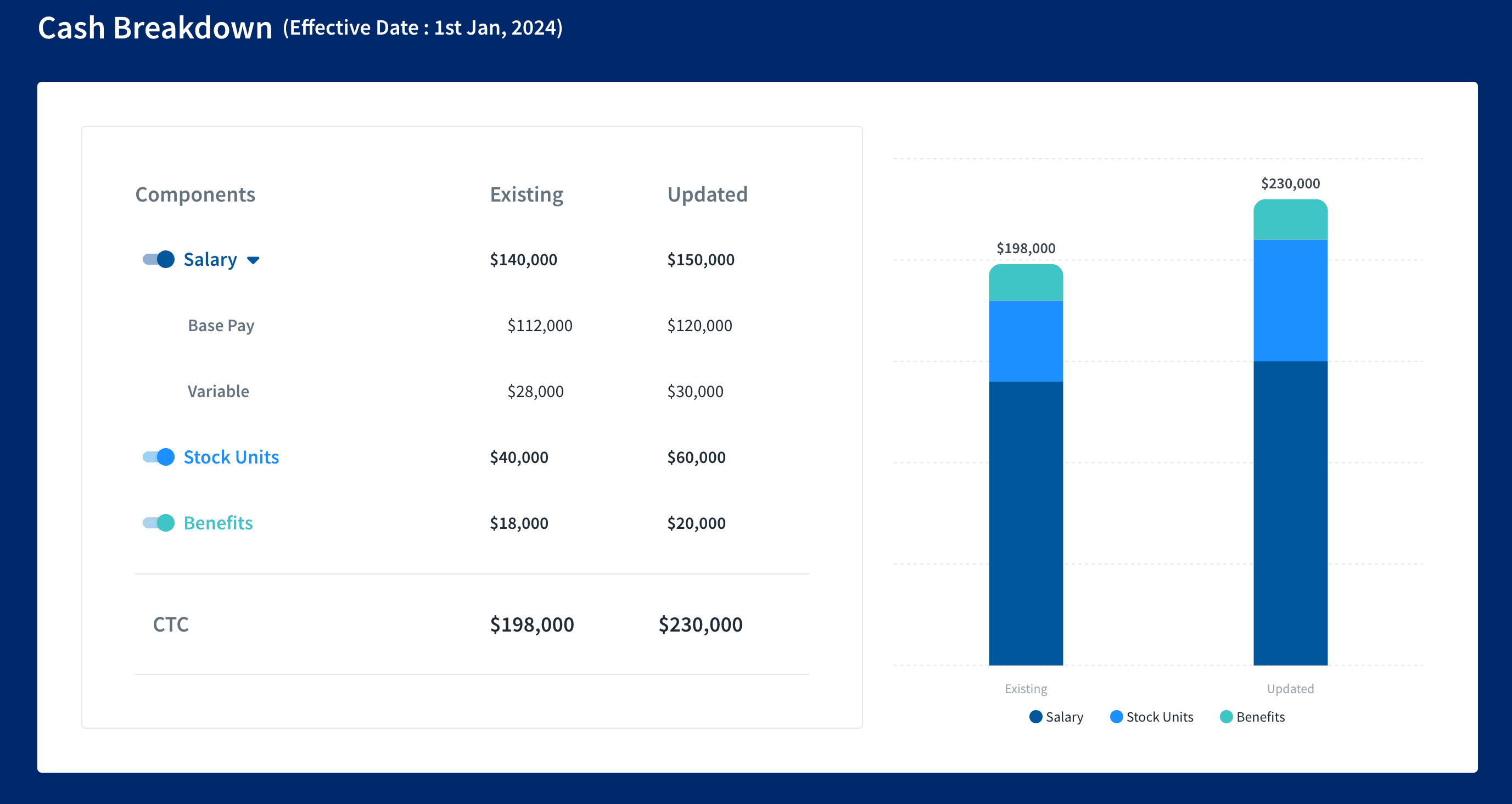
- The platform tracks the vesting schedules for your employees’ stock options and provides relevant analytics for consumption.
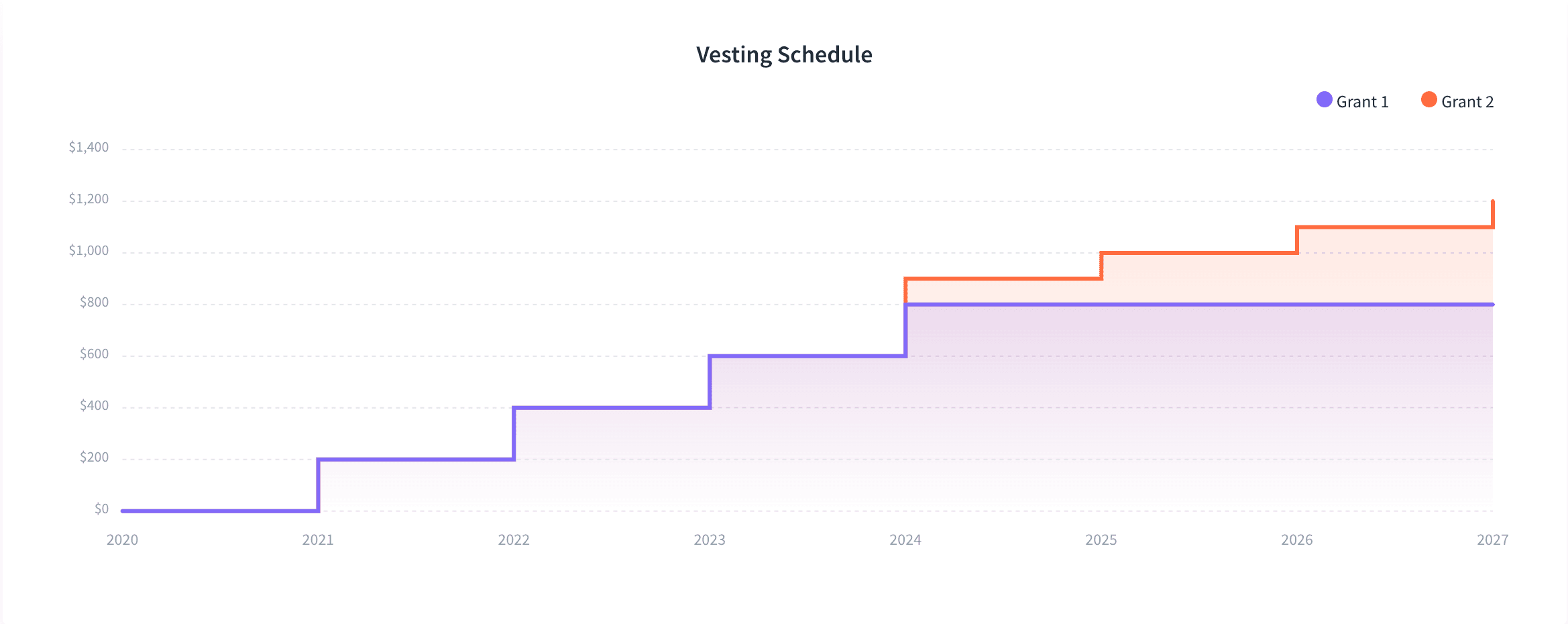
- CompUp’s total rewards statement has a section that shows your overall income growth within the organization and has future projections to help employees with better financial planning.
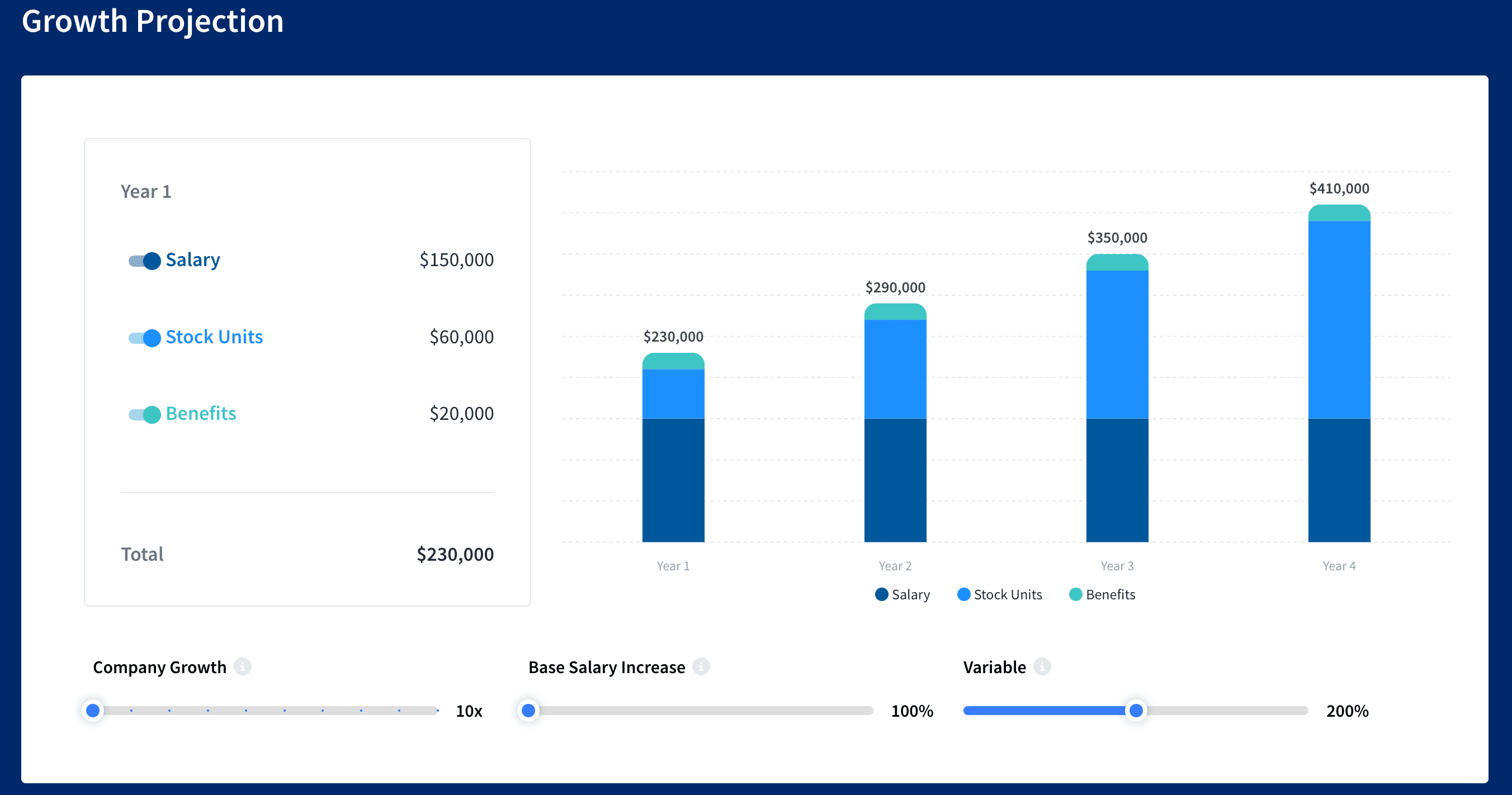
- The interactive lobby also has a section for tracking past compensation growth to enable your employees to compare their personal growth in terms of compensation.
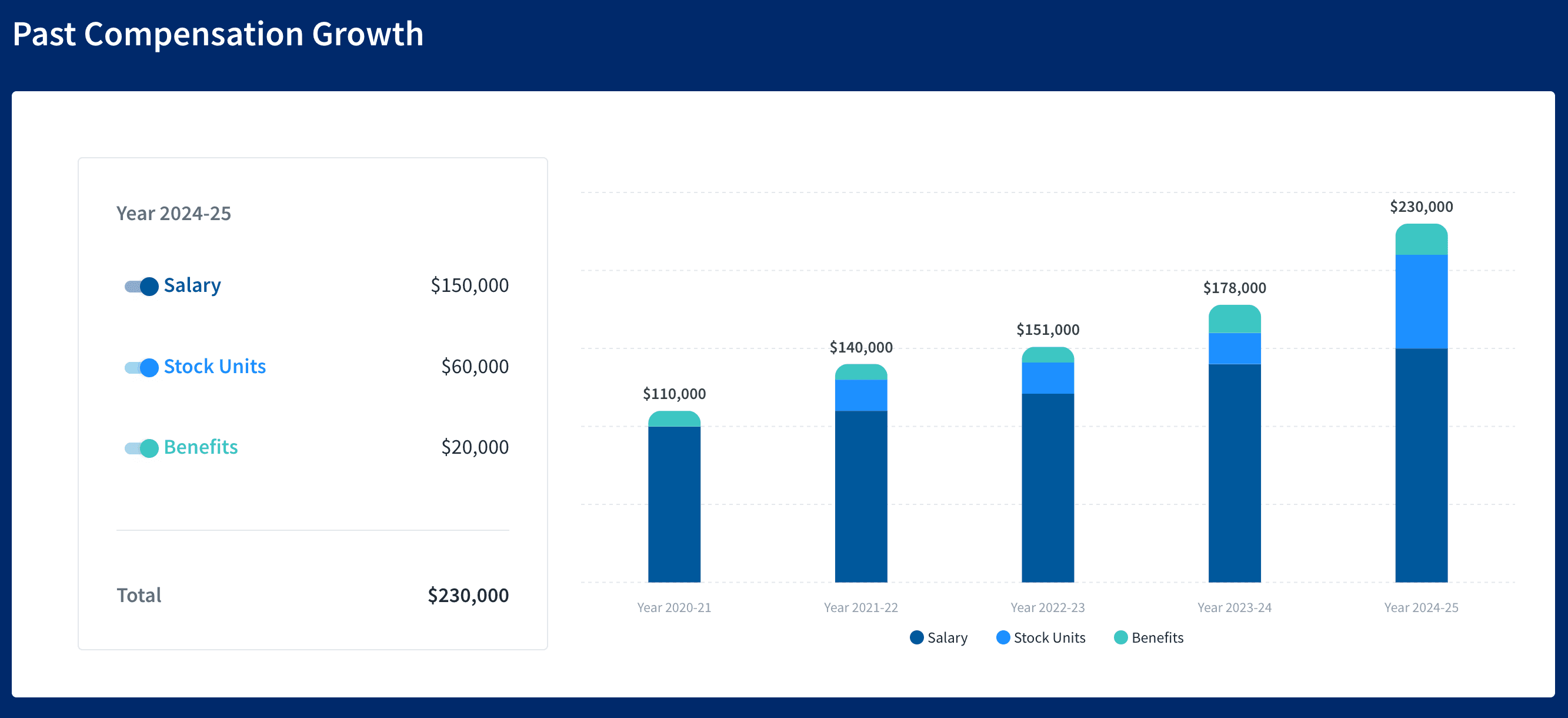
Click here to learn more about the features of CompUp’s total rewards statement.
